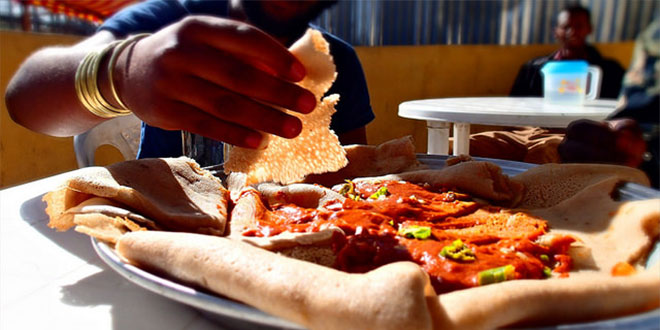Last Updated on November 21, 2023
Our world is full of diverse and interesting cultures. A variety of factors shape our cultures. For example, the clothes we wear, the languages we speak, the traditions we keep, and, of course, the food we eat. Local cuisine can tell you a lot about a culture, typically because its signature dishes consist of the prominent ingredients from the area.
Along with local ingredients, the staple foods of the various civilizations of the world are usually cooked in a way that is unique to the region too. This combination of distinct cooking styles and locally-sourced ingredients creates a particular flavor that is symbolic of the corresponding culture.
Some staple foods come to mind when you think about certain cultures. For example, nearly every Japanese meal includes soy sauce. And you will find corn as a staple on nearly every American table, especially during the Fourth of July.
Our incredible planet is a tapestry woven with diverse cultures, each with its unique tapestry of traditions, languages, and, of course, tantalizing cuisines. A cultural journey is incomplete without delving into the heart of local dishes that speak volumes about a community’s history and identity, often crafted from the region’s abundant and signature ingredients.
The art of preparing staple foods is a reflection of the distinctive cooking styles blended with locally-sourced treasures, resulting in a delightful flavor that encapsulates the essence of a particular culture.
Unveiling the Culinary Treasures
When pondering staple foods, certain iconic elements pop into mind, like the ubiquity of soy sauce in Japanese cuisine or the comforting presence of corn on American tables, especially during the lively Fourth of July celebrations.
TAKEAWAY: Did you know that ‘basmati’ in Hindi means ‘queen of fragrances’ due to its exceptional aroma? This traditional variety of rice is a symbol of community in India and Pakistan, and its first cultivation dates back to around 2,000 BCE in the foothills of the Himalayas. A number of traditional Indian foods use Basmati rice as the main ingredient.
Personal connections with staple foods
What makes food an integral part of culture is the personal connection people share with their staple foods. It’s not just about nourishment; it’s a form of expression. The dishes one grows up with and shares with family become a thread connecting them to their roots. For those living far from home, indulging in familiar signature dishes can offer a taste of comfort and nostalgia.
For the curious traveler, exploring typical local meals provides a delicious insight into a region’s culinary soul. It’s a way to savor the essence of a culture through its most cherished recipes.
Staple Foods from Around the World infographic
To embark on a gastronomic journey across the globe and explore the signature foods and ingredients that define various cultures, dive into the captivating infographic curated by Kitchen Cabinet Kings. It’s a visual feast that celebrates the beauty of diversity, showcasing the rich tapestry of staple foods that unite communities and tell stories through every delicious bite.
Whether you’re a culinary enthusiast, a seasoned traveler, or someone who simply appreciates the art of food, this infographic is your passport to the heart of global cuisine. Let the flavors of the world transport you to new culinary heights, connecting you with the richness of cultures that make our world a truly extraordinary place. 🌏🍽️
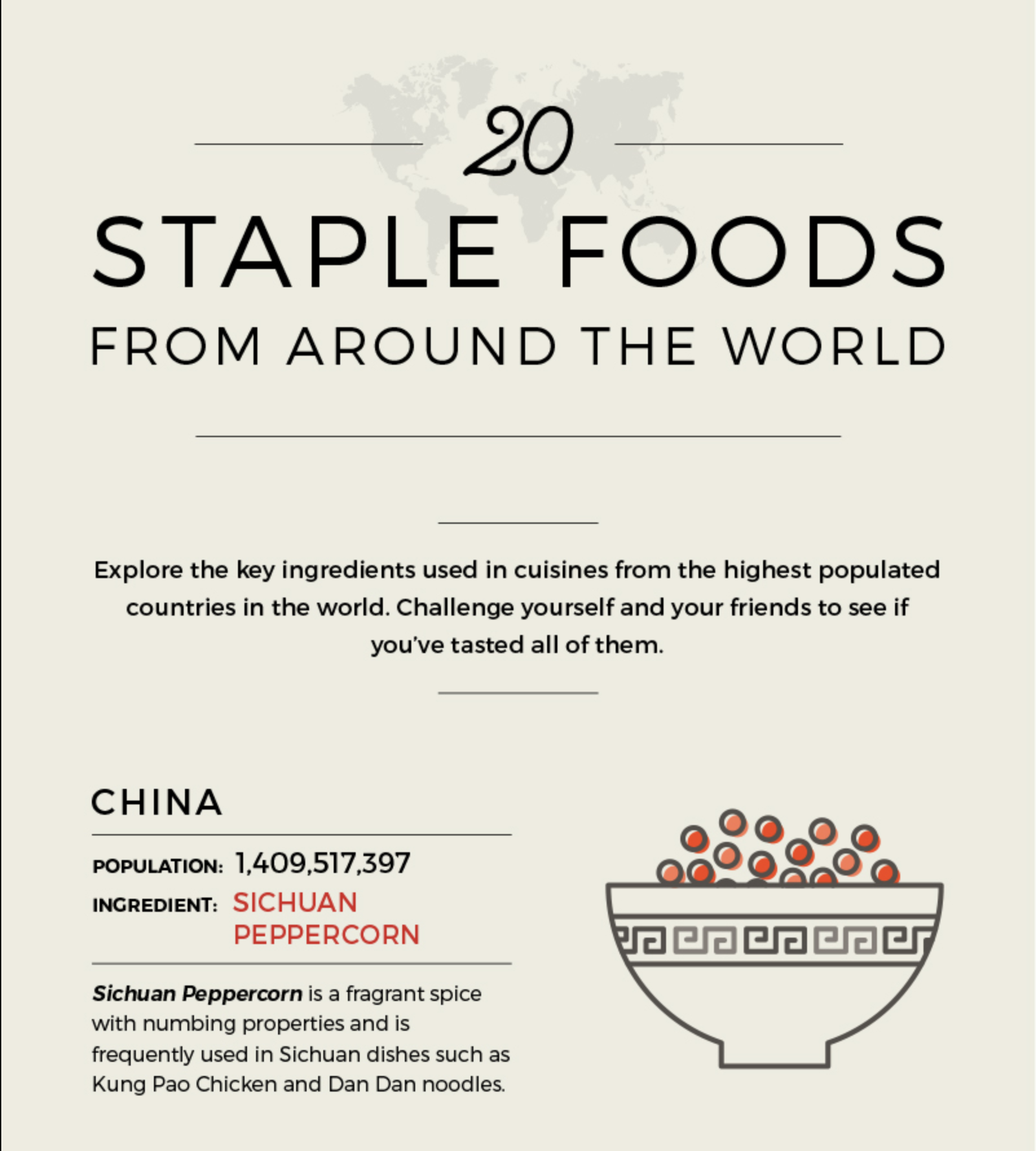

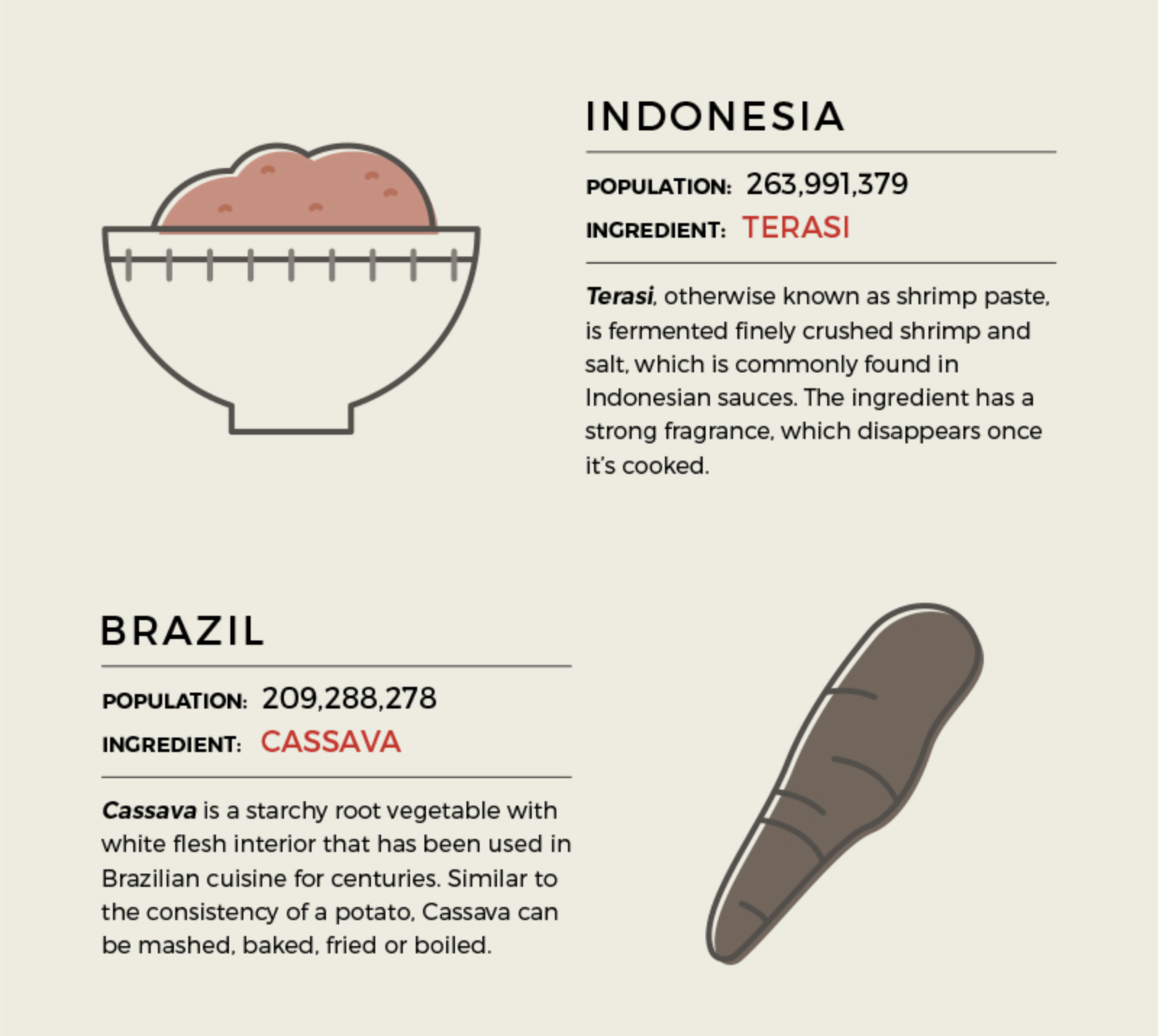
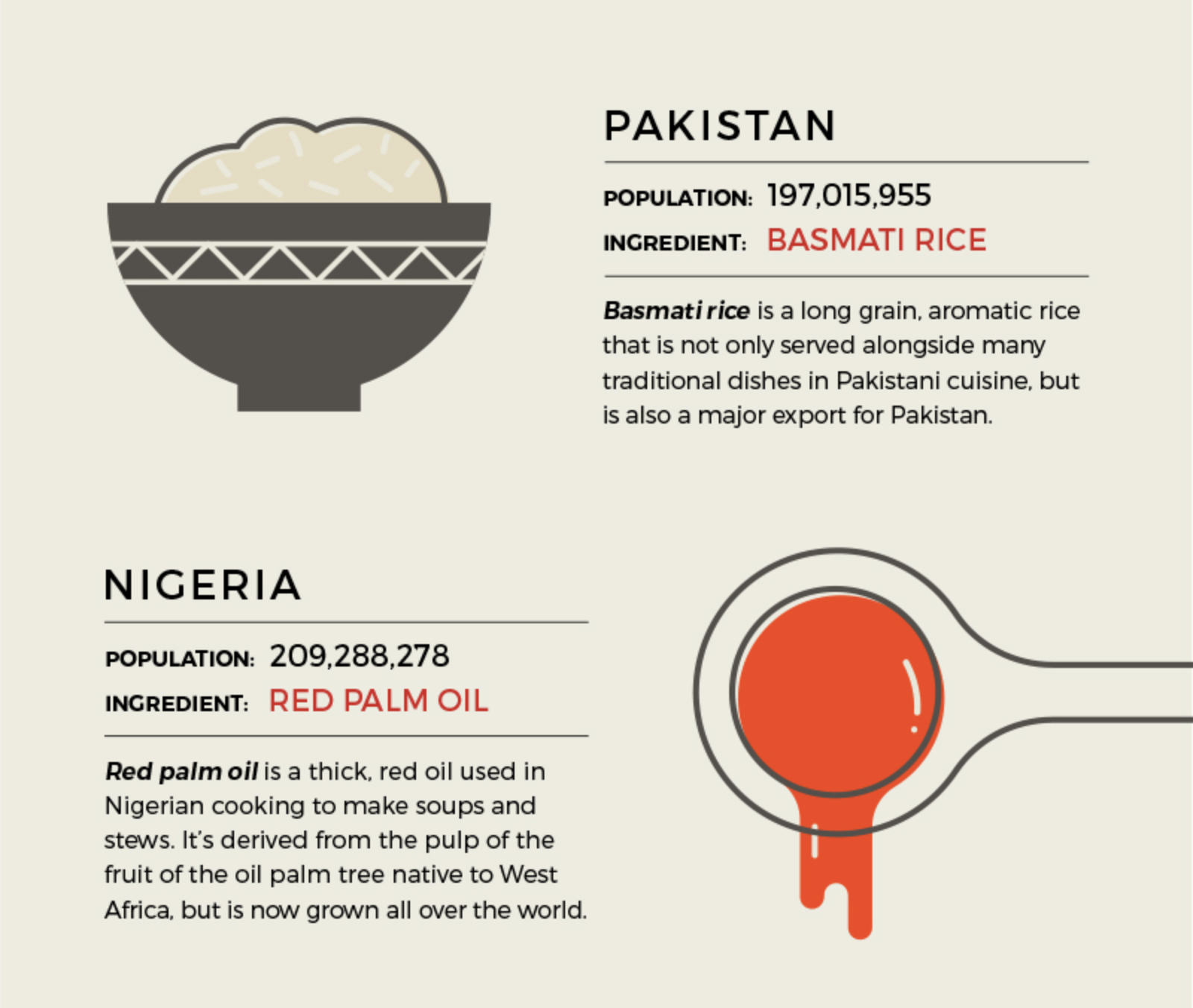
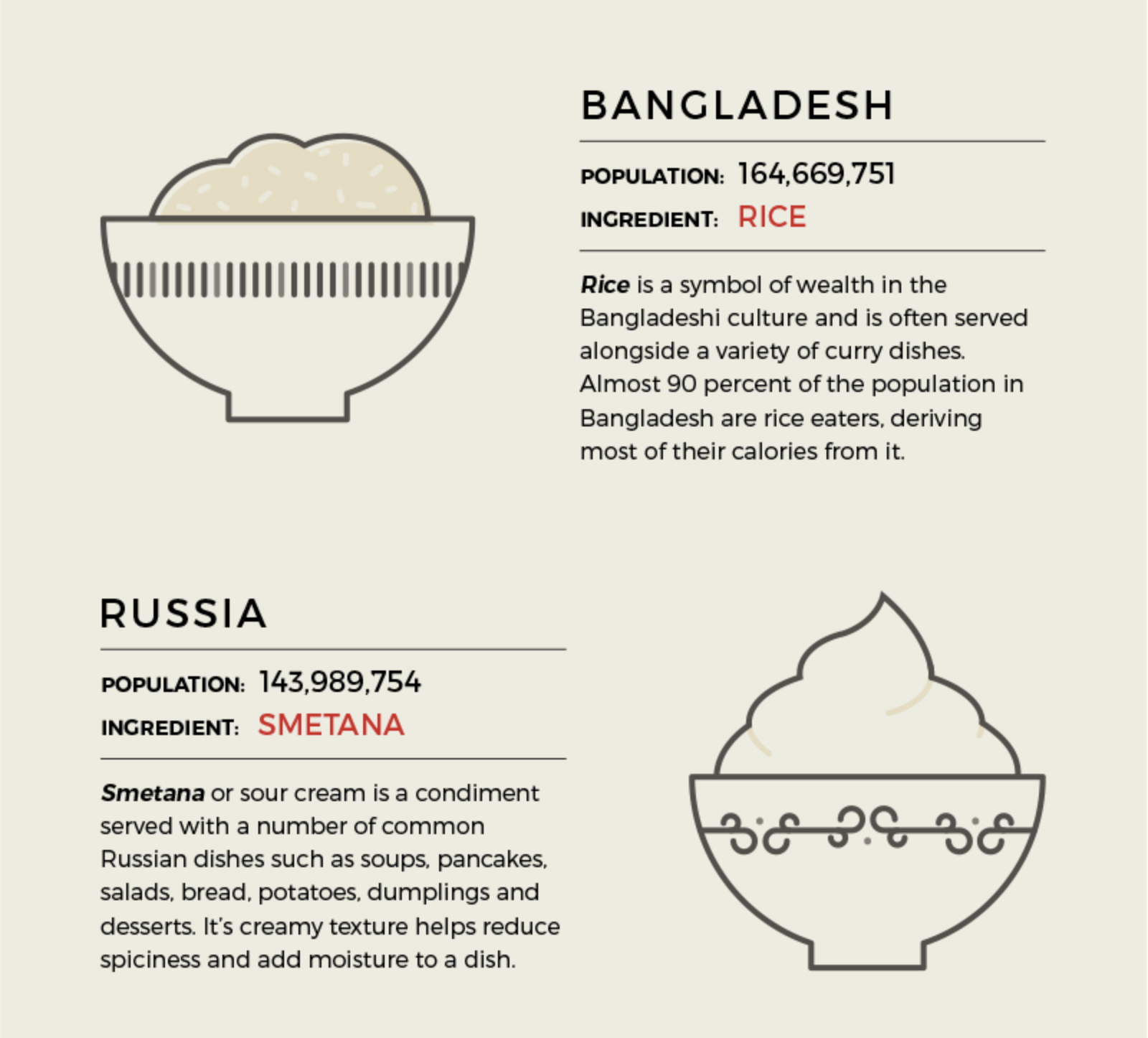
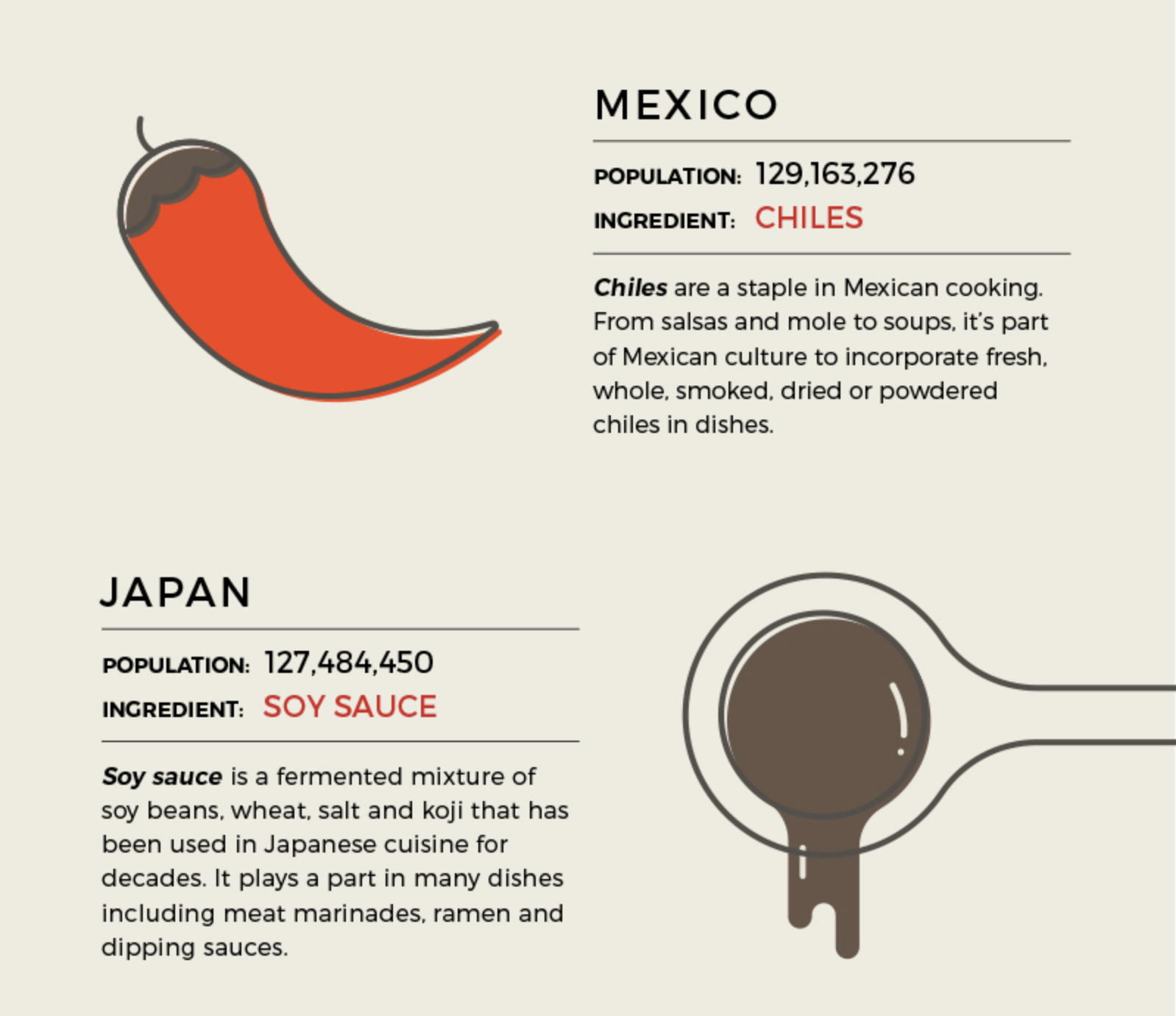
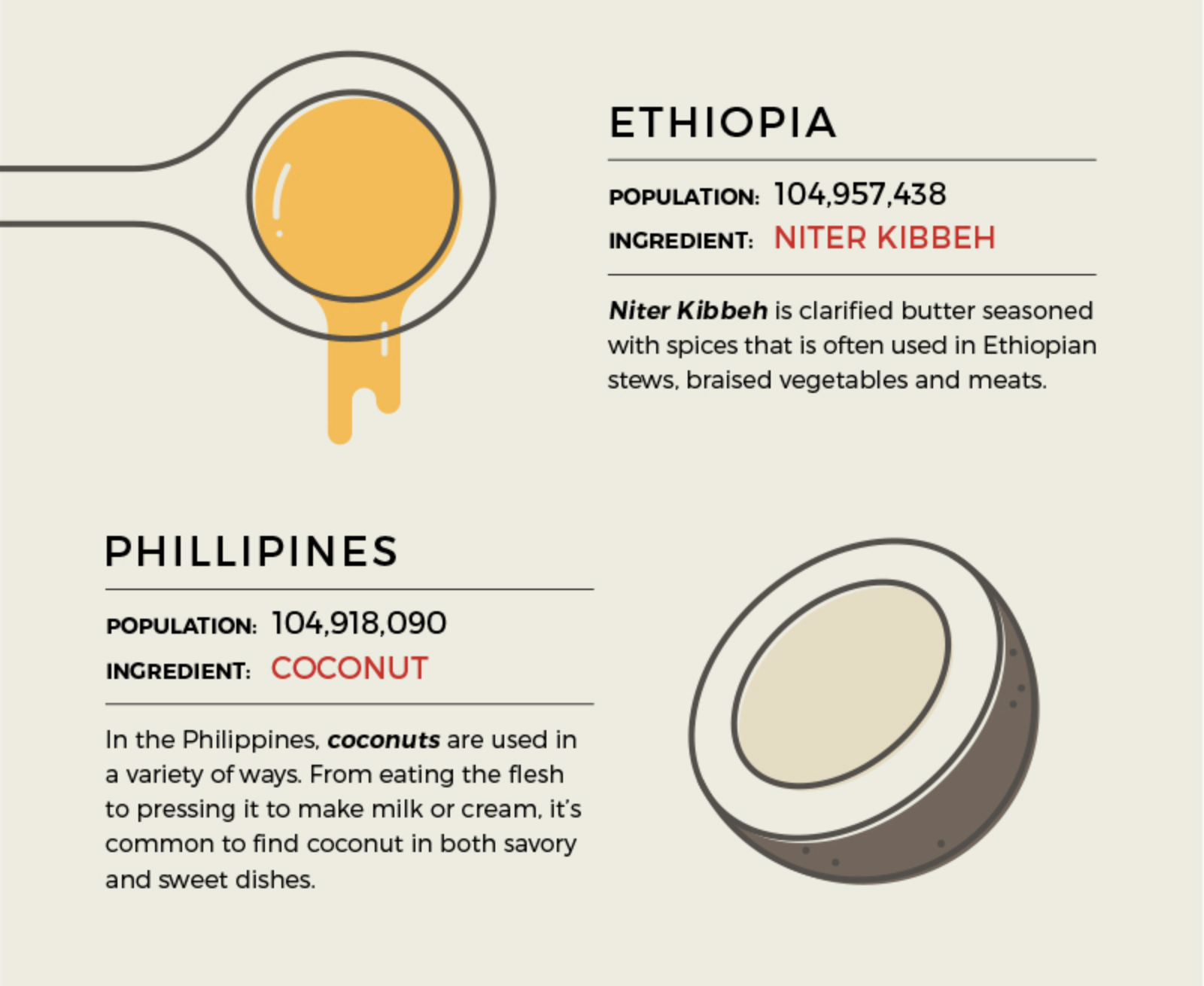
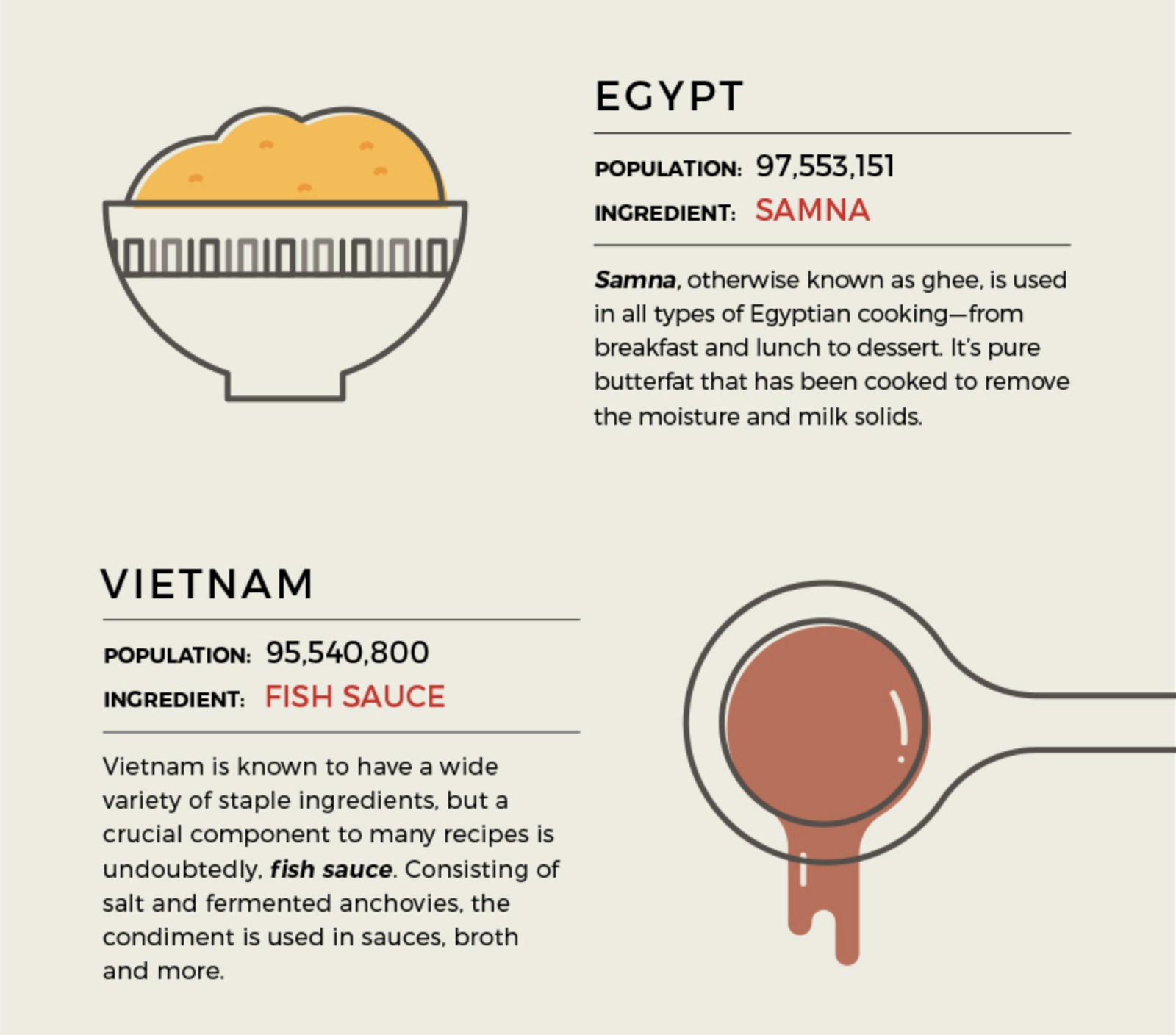
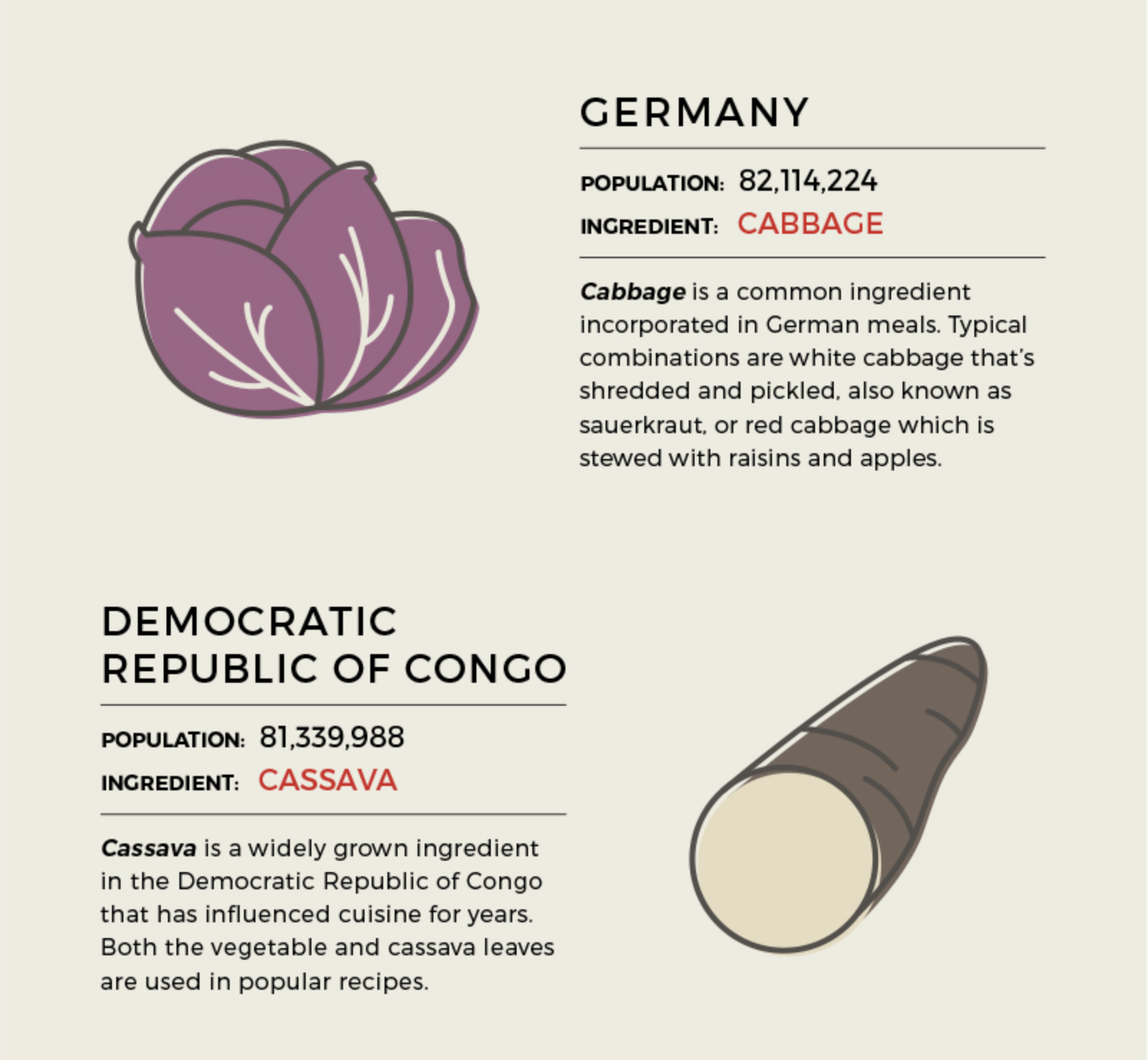
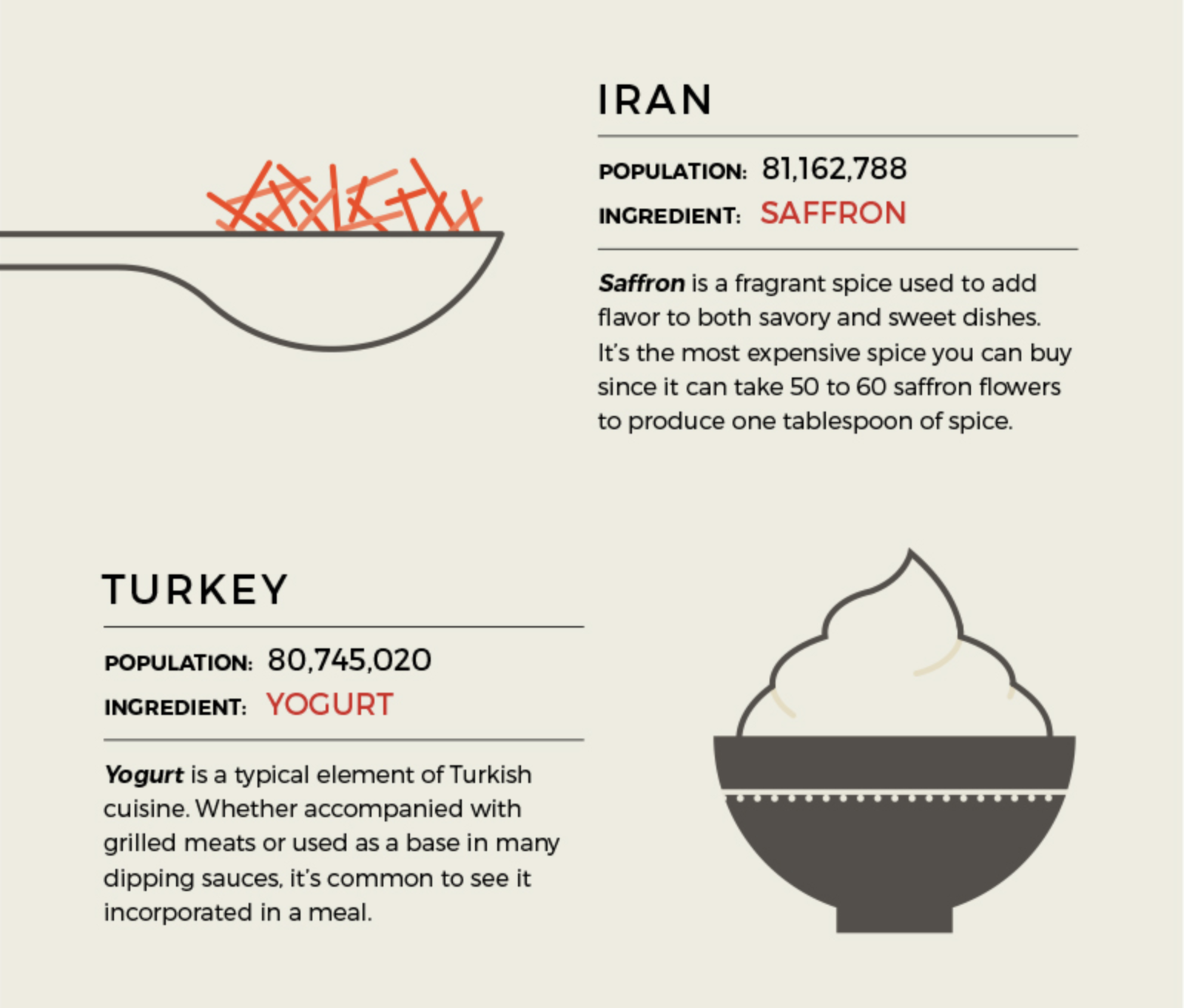
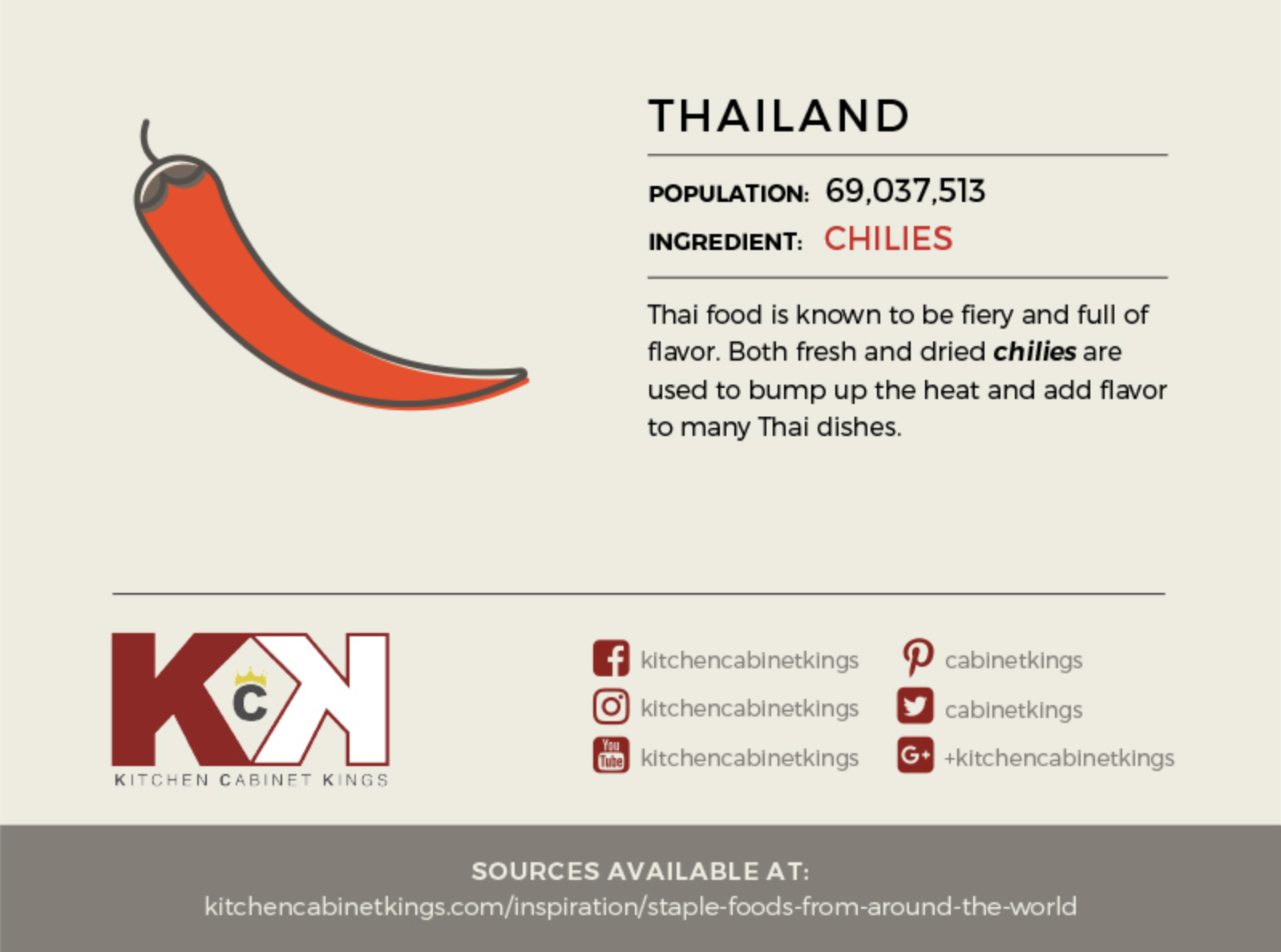
Sichuan Peppercorn in China 🇨🇳
Sichuan Peppercorn, known for its numbing and spicy kick, is the heartbeat of Chinese cuisine. Sourced from the mountainous Sichuan province, this spice has been tantalizing taste buds for centuries. Its unique flavor profile, tingling on the palate, defines iconic dishes like Mapo Tofu and Hot Pot, making it an essential in every Chinese kitchen.
Turmeric in India 🇮🇳
Golden and aromatic, turmeric is the vibrant soul of Indian cooking. Beyond its warm hue, it boasts medicinal properties and is a staple in Ayurvedic practices. From spicy curries to soothing turmeric milk, it’s a versatile spice ingrained in every Indian household, symbolizing both flavor and well-being.
Corn in United States 🇺🇸
Corn, an emblem of American agriculture, takes center stage on tables across the United States. Whether enjoyed fresh on the cob during summer barbecues or transformed into popcorn for movie nights, corn is a versatile grain that unites the nation, especially during the cherished Fourth of July celebrations.
Terasi in Indonesia 🇮🇩
Terasi, a pungent shrimp paste, is the secret behind the bold flavors of Indonesian cuisine. Fermented to perfection, it adds depth to dishes like Nasi Goreng and Sambal. This umami-packed condiment showcases Indonesia’s culinary artistry, creating a symphony of tastes that reflects the archipelago’s rich cultural diversity.
Cassava in Brazil 🇧🇷
Cassava, a culinary cornerstone in Brazil, is a versatile root vegetable. From the iconic Farofa to the hearty Cassava cake, it weaves its way into daily meals. Its resilience in diverse climates and its role in traditional festivities make it a symbol of Brazilian gastronomy, connecting communities through shared culinary experiences.
Basmati Rice in Pakistan 🇵🇰
Basmati rice, the ‘queen of fragrances,’ holds a regal place in Pakistan’s culinary heritage. With a distinct aroma and fluffy texture, it graces tables during festive occasions and everyday meals alike. The cultivation of Basmati rice dates back to ancient times, embodying a tradition that has become synonymous with community, celebration, and the essence of Pakistani hospitality.
Red Palm Oil in Nigeria 🇳🇬
Red Palm Oil, a staple in Nigerian cuisine, not only imparts a rich color to dishes but also carries cultural significance. From jollof rice to soups, its earthy flavor elevates traditional Nigerian recipes. Beyond the kitchen, it plays a role in ceremonies, symbolizing prosperity and communal ties, making it an integral part of the Nigerian way of life.
Rice in Bangladesh 🇧🇩
Rice, the lifeblood of Bangladeshi cuisine, is more than a staple—it’s a cultural cornerstone. Whether it’s the fragrant Basmati or the indigenous varieties, rice takes center stage in dishes like Biryani and Khichuri. Its cultivation is intertwined with Bangladeshi traditions, reflecting the nation’s agricultural heritage and culinary diversity.
Smetana in Russia 🇷🇺
Smetana, the rich and velvety sour cream, is a culinary gem woven into the fabric of Russian gastronomy. Its luxurious texture and tangy flavor elevate a myriad of dishes, from the iconic Borscht to the comforting Pelmeni. Smetana is not just a condiment; it’s a symbol of indulgence and hospitality, reflecting the warmth and generosity of Russian culture. As it graces tables across the vast expanse of Russia, this creamy delight embodies the nation’s culinary heritage, connecting people through shared moments of delicious joy.
Chilies in Mexico 🇲🇽
Chilies, with their fiery allure, are the soul of Mexican cuisine. From the mild poblano to the intense habanero, they dance through salsas, moles, and tacos, creating a symphony of flavors. As a culinary constant, chilies embody the vibrant spirit of Mexico, infusing every dish with a spicy kick and a dash of cultural zest.
Soy Sauce in Japan 🇯🇵
Soy Sauce, the umami-rich elixir, is the heartbeat of Japanese cooking. From sushi to stir-fries, it enhances flavors and adds depth to dishes. Its centuries-old brewing process and delicate balance of salty-sweet notes make it a kitchen essential, embodying the precision and artistry that define Japanese culinary excellence.
Niter Kibbeh in Ethiopia 🇪🇹
Niter Kibbeh, a spiced clarified butter, is the aromatic essence of Ethiopian cuisine. Infused with a blend of spices, it imparts a rich, savory flavor to iconic dishes like Doro Wat. Beyond its culinary role, Niter Kibbeh is a cultural symbol, representing the intricate flavors and warm hospitality of Ethiopia.
Coconut in Philippines 🇵🇭
Coconut, hailed as the “tree of life” in the Philippines, is a culinary treasure that graces a myriad of dishes. From the creamy goodness of coconut milk in Adobo to the sweet delight of Buko Pandan, it’s a versatile ingredient that mirrors the tropical abundance of the archipelago, adding depth and richness to Filipino cuisine.
Samna in Egypt 🇪🇬
Samna, the golden clarified butter of Egypt, is a culinary legacy that transcends generations. Its rich, nutty flavor elevates classics like Fattah and Basbousa, showcasing the time-honored culinary traditions of Egypt. Samna not only defines the taste of Egyptian dishes but also serves as a connection to the country’s culinary heritage.
Fish Sauce in Vietnam 🇻🇳
Fish Sauce, the savory elixir of Vietnamese kitchens, is a cornerstone of the country’s culinary identity. From Pho to Banh Mi, its umami-rich essence adds depth to Vietnamese dishes. Produced through a meticulous fermentation process, Fish Sauce embodies the balance and harmony that characterize Vietnamese cuisine, creating a symphony of flavors that captivates the senses.
Cabbage in Germany 🇩🇪
Cabbage, in its various forms, plays a central role in German cuisine. From the hearty Sauerkraut to the comforting Rotkohl, it’s a versatile vegetable that takes on diverse flavors. Cabbage reflects the agricultural roots of Germany, becoming a staple in both everyday meals and festive celebrations, adding a crisp and refreshing element to German dishes.
Cassava in Democratic Republic of Congo 🇨🇩
Cassava, a culinary cornerstone in the Democratic Republic of Congo, embodies the resilience and resourcefulness of its people. From Fufu to Chikwangue, it forms the basis of hearty and satisfying meals. Cassava’s adaptability to diverse climates and its role in traditional celebrations make it a symbol of Congolese culinary heritage and communal bonds.
Saffron in Iran 🇮🇷
Saffron, the “red gold” of Iran, is a precious spice that lends its vibrant color and distinct flavor to Persian cuisine. From aromatic rice dishes like Zereshk Polo to delicate desserts like Sholeh Zard, saffron is a symbol of luxury and sophistication. Its cultivation in the arid landscapes of Iran represents the resilience and ingenuity of Iranian culinary traditions.
Yogurt in Turkey 🇹🇷
Yogurt, a creamy delight, holds a special place in Turkish cuisine. From the refreshing Ayran to the indulgent Manti, yogurt’s versatility is a testament to its cultural significance. Beyond its culinary role, yogurt is a symbol of health and hospitality, embodying the warmth and generosity that define Turkish culture.
Chilies in Thailand 🇹🇭
Chilies, with their fiery allure, are the heart and soul of Thai cuisine. From the zesty kick of Som Tum to the aromatic richness of Tom Yum, they are omnipresent in Thai dishes. Chilies not only add heat but also contribute to the intricate balance of flavors that characterize the vibrant and diverse culinary landscape of Thailand.
You may also enjoy reading:
SUBSCRIBE TO THE NEWSLETTER
To receive food and travel inspiration
 Travel for Food Hub The Food Blog for Travel Lovers
Travel for Food Hub The Food Blog for Travel Lovers

